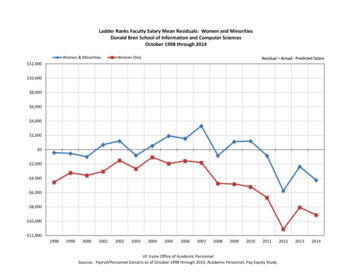
Transcription
Donald M. MurrayMAKING MEANING CLEAR: THE LOGIC OF REVISIONThe writer's meaning rarely arrives by room-service, all neatly laid outon the tray. Meaning is usually discovered and clarified as the writermakes hundreds of small decisions, each one igniting a sequence ofconsideration and reconsideration.Revision is not just clarifying meaning, it is discovering meaning andclarifying it while it is being discovered. That makes revision a far morecomplicated process than is usually thought-and a far simpler process atthe same time.It is complicated because the writer cannot just go to the rule book.Revision is not a matter of correctness, following the directions in amanual. The writer has to go back again and again and again to considerwhat the writing means and if the writer can accept, document, andcommunicate that meaning. In other words, writing is not what the writerdoes after the thinking is done; writing is thinking.This also makes revision simpler. There is a logic to the process. Thewriter needs only a draft, a pen, and a brain. Each editorial act must relateto meaning. That is the primary consideration that rules each editorialdecision. Considerations of audience, structure, tone, pace, usage,mechanics, typography are primarily decided on one issue: do they makethe meaning clear?The process of revision-what the reviser does-is fairly simple. Thewriter cuts, adds, reorders, or starts over. Each of these acts fits into asequence most of the time. The writer solves the problems of meaning,and those solutions make it possible to solve the problems of order, andthose solutions make it possible to solve the problems of voice.Donald M. Murray. Professor of English at the University of New Hampshire and a Pulitzer Prizeeditorial writer, has been director offreshman English and now supervises a university-wide compositioncourse. He is the author of A Wri1er Teaches Wri1ing as well as articles, poems. novels. and juvenile non .fiction books. He was writing consultant to the Boston Globe and is t·onsultant to the ProvidenceJournal-Bullclin. the News Observer and the Raleigh Times. and other newspapers.DOI: 10.37514/JBW-J.1981.3.3.04 33
Unfortunately, many teachers- and, I have discovered recently, manynewspaper editors- do not understand the logic of revision and,therefore, do not encourage or even allow revision. They pounce on firstdraft writing and make corrections.Since most writers have not discovered their meaning in their firstdraft, the corrections editors make must come from the editors' ownpreconception of what the writing should mean. It comes from theeditors' own experience , their own research, their own prejudices. Theywork in ignorance of the writer's intentions and take the writing awayfrom the writer.When editors or teachers kidnap the first draft, they also remove theresponsibility for making meaning from the writer. Writing becomestrivialized, unchallenging, unauthoritative, impersonal, unimportant.Hemingway told us, "Prose is architecture, not interior decoration . "Premature correction by a teacher or an editor must focus mainly on thedecoration, the cosmetics of writing. Of course, writers must spellcorrectly, must follow the conventions of language that make meaningclear. But the writer must do it in relation to the writer's meaning throughthe medium of the writer's own voice . Writing is too important to becorrected by the book; it must be corrected in relation to meaning.When revision is encouraged, not as a punishment but as a naturalprocess in the exploration of the text to discover meaning, then manybasic writers become motivated to revise. It is a slow but miraculousprocess. The basic writers spot a hint of meaning that surprises them.Usually the meaning is in a primitive form at the time it is first shared witha teacher or fellow student. Basic writers are urged on. Soon they do notrevise to become correct, they revise to discover their individual meaning,to hear their own voices making those meanings clear, and to hear theirreaders' delight as an unexpected meaning is recognized as true.The making of meaning through revision is a logical craft. Once astudent has made meaning, the process can be repeated . It is not an act ofmagic anymore than magic acts are; it is a matter of tuning an engine,kneading dough, sewing a dress, building a shelf. The act of revisionallows the writer to take something that was not and make it somethingthat is; it allows the writer to achieve the satisfaction of completion,closure.Revision can be the most satisfying part of teaching composition if theteacher is willing to let go. The composition teacher must wean thestudent. The teacher must give the responsibility for the text to the writer,making clear again and again that it is the student, not the teacher, whodecides what the writing means.34
The best way for teachers to reveal exploration in revision is by writingin public on the blackboard, or by using an overhead projector, allowingthe students to see how writing struggles to find what it has to say. Theteacher should not consciously write badly; the teacher should write aswell as possible. That will produce copy that is quite bad enough todeserve revision.The teacher who writes in public will expose the fact that writing oftendoes not come clear; in fact, syntax often breaks down just at the pointwhere a new or significant meaning is beginning to break out of its shell.That meaning has an awkwa rd and clumsy time of it, but if the writerlistens carefully and nurtures the meaning, it may grow into significance.Or it may not. It may have to be put aside. But first it has to beunderstood before it can be rejected. Teachers who are willing to shareevolving writing will find their class willing to share in a workshop whereeveryone is trying to help the writer discover and clarify the evolvingmeanmg .I have internalized a check list that follows the logic of revision. It maybe helpful to consider this checklist, but each teacher should work todevelop a new checklist with each class. Neither my checklist nor anyoneelse's checklist should be taken as gospel. The checklist should beformulated while the class experiences the process of making meaningclear.The principles that underlie my checklist are: Build on strength. The writer searches the text for the meaning that isbeing developed by the writing and looks for what is working to make itwork better. Revising is not so much a matter of correction as it is amatter of discovering the strength of the text and extending that strength. CUI what can be cut. An effective piece of writing has a single dominantmeaning, and everything in the text must advance that meaning. Simplicity is best. This does not mean writing in pidgin English, merelysending a telegram to the reader. It does mean making the writing assimple as it can be for what is being said. The message may be complex ,and that may require linguistic or rhetorical complexity, but thatcomplexity should always be the simplest way to communicate thecomplexity. The writing will tell you how to write. In revising I do not look to rulebooks, to models from other writers, to what I have written before, orhow I have written it. The answers to the problems of this piece of writinglie in the evolving text. I have faith that if I read carefully- if I listen tomy own developing voice- I will discover what I have to say.35
My checklist requires at least three different kinds of reading- forfocus, form and voice. This does not mean that I read the text three times;it is possible that the readings overlap and I read it only a couple of times.Most times I read it many more times. There is ilO ideal number ofreadings. I read it enough times to discover what I have to say.During each of the readings I keep my eye and my ear on the singledominant meaning that is evolving from the text. A good piece of writing,I believe, says only one thing. Or to put it in a different way, the manythings that are said in a piece of writing all add up to a single meaning.Here is my internal checklist articulated:Focus. First I read the text as fast as possible, trying to keep my pencapped. trying to see it from a distance the way the reader will so I can askmyself the larger questions of content and meaning. I do not do this "first"reading, of course. until I have the meaning of the writing in mind. In otherwords. I have to have a focus before I can work on the focus. If, in eachstage of the reading. the meaning docs not become clearer and clearer. I goback and discover a potential meaning that can be brought into focus. Thequestions I ask are: What does the piece of writing mean? If it is not clear. I will take the timeto write a sentence that makes the meaning clear. that achieves whatVirginia Woolf calls. "the power of combination." that contains thetensions within the piece of writing in a single statement. Are all the reader's questions answered? Many times I will brainstorm thequestions that the reader will inevitably ask of the text. Is new information needed? Is the piece built on undocumented assumptions? Sometimes I will actually write down my assumptions to see if they make sense or stand upas a firm foundation for the piece.Is the genre appropriate to the meaning? One of my novels started out asa series of articles. By genre I mean fiction. poetry. or the largercategories of non-fiction - personal narrative. familiar essay. argument.exposition.Are there any tangents that can be cut/oose? I used to have much moretrouble geting rid of those wonderful pieces of evidence or examples ofwriting that really did not relate to the meaning. Hannah Lees taught mehow to solve this problem. For years I wrote one paragraph to a page.then played solitaire with these paragraphs. arranging and re-arrangingthem until they made a single meaning.Is there a section that should be a separate piece ()f" writing?Is each point supported by convincing el·idence? Sometimes I actuallyrole-playa reader. It is always a specific person I know who does not36
agree with me and who I believe does not like me . I want to confront myenemies and defeat them before the writing is published. Is the piece long enough to satisfy the reader? Most writers underwrite ,and I am no exception. The tendency is to say it and not to give thereader enough room for the reader to discover the meaning. Is the piece short enough 10 keep the reader involved? The piece ofwriting must develop its own energy, its own momentum . If my mindwanders during thi s first quick reading, the reader's certainly will.Form. Next , I read the text again, a bit more slowly, only uncapping mypen when a marginal note is necessary, trying to look at the text as aseq uence of chunks of writing. perhaps chunks of meaning. I am no longerlooking at the text as a whole, although I am aware of the territory now ,and I am trying to keep myself free of the concern with detail, for apremature involvement with the details of language may keep me fromevaluating the questions of form. The questions I ask are: Is the title on target? Years ago when I could put my own heads oneditorials, I found that the effort to write a title is worth the trouble. Imay draft as many as a hundred titles, for each one is a way ofdiscovering meaning. and I can draft a number of titles in almost sliversof time. At this stage of the revision process I check to make sure that thetitle relates to the meaning as that meaning has now evolved. Does the lead catch the reader in three seconds-or less? I hear rumors ofgood pieces of writing that have poor leads or beginnings, but I have notbeen able to find any from professional writers. The first few lines of apiece of writing establish the tone , the voice, the direction , the pace, themeaning. I check once more to make sure that the lead will entice thereader. Does the lead deliver on its contract with the reader? The lead must behonest. It must relate to the meaning that will evolve through the text. Does the piece answer the readers questions at the point the reader willask them? This is the key to effective organization. Again and again I willask the questions the reader will ask, even if they are the questions I donot want the reader to ask, and then number them in the order the readerwill ask them. A good piece of writing does not need transitional phrases .The information arrives when the reader can use it. The reader'squestions and their order can be anticipated. How can I get out of the way of the reader and show rather thantell? Orwell instructed writers that they should be like a pane of glassthrough which the reader sees the subject. I do not want the reader to beimpressed with my writing; my arrogance is greater than that. I want thereader to receive the evidence in such a direct fashion that it will cause the37
reader to think the way I want the reader to think. I want to show soeffectively that the reader will see my meaning as inevitable. Is there an effective variety of documentation? Most of us fall into apattern using quotations, citations, anecdotes, statistics, personal experi ence- whatever we feel comfortable using or whatever we think we dowell. The documentation, of course, should be what works best for thepoint being documented . Does the pace reinforce the meaning? The reader should be allowed toabsorb each point before moving on to the next one. ] tend to write andto teach too intensively; I have to remember to give the reader room. Does the pace provide the energy to carry the reader forward? Are the dimensions appropriate to the meaning? The size of each sectionshould be in proportion to other sections. Does the end echo the lead and fulfill its promise?Voice. At last, I read the text slowly, line by line, my pen uncapped . Iusually read the text many times within this category, generally workingfrom the larger issue of voice down to paragraphs to sentences to phrases tosingle words. This is the most satisfying part of revision. There is a singlemeaning. It will change and develop and become clearer, but there is afocus , there is an order, and there is the chance to work with language, tocombine my voice with the voice that is evolving from the draft. Thequestions I then ask are: Can the piece be read aloud? Does it sound as if one person is talking toone person? Reading is a private experience, a human contact from onesingle person to another single person . I think that effective writingshould be conversational. Sometimes the conversation is more formalthan others, but it should never be stuffy, pretentious, or incapable ofbeing read aloud by the writer. Are important pieces of specific information at the ends and beginningsofkey sentences, paragraphs, sections. and the entire piece itself? The 2-3 I principle of emphasis can do as much as anything else to sharpen upprose and make meaning clear: the second most important point ofemphasis is at the beginning; the least important piece of emphasis is atthe middle, and the greatest point of emphasis is at the end. Dues each paragraph make one puint.? Does each paragraph carry a full load of meaning to the reader? Du the paragraphs vary in length in relation to meaning-the shorter themore important the informatiun: Are the paragraphs in order? If the reader's questions are answered whenthey will be asked. formal transitions will not be needed. Does the reader leave each sentence with more infurmation than thereader entered it?38
Are there sentences that announce what will be said or slim up what hasbeen said and, therefore, can be CUI? Are most sentences subject-verb-object sentences? At least most sentencesthat carry the essence of meaning should be direct sentences. Theinteresting work done in sentence-combining has too often confused thisissue . Of course sentences should be combined, but the strength and vigorof the language still lies in simple, direct subject-verb-object sentences.These are the sentences. short and to the point, that will communicate . Are there clauses that get in the way ofmeaning? Many sentences have tobe reordered so that the meaning comes clear. This usually means thatsentences have to be read aloud again and again until the informationin the sentence appears at the moment that the reader can use it. Are the verbs active and strong enough10drive the meaning forward?The verbs are the engines of meaning, and during revision the writer mustgive priority to finding verbs that are accurate and provide energy. Has the right word been found? Many times we try to use two almostright words in the hope that we will trap the meaning between them. Thatdoes not work . Mark Twain said, "The difference between the right wordand the almost-right word is the difference between lightning and alightning-bug." He was right. Revision is the search for the exactly rightword. Does the meaning depend on verbs and nouns, not adverbs andadjectives? The right word is rarely an adjective or an adverb. Again , themeaning is not caught best in the crush between adjective and noun , oradverb and verb. I always feel a tiny sense of failure when I use anadjective or an adverb. I have failed to find the right noun or the rightverb. Is there sexist or racist language that should be changed? Can the writing be more specific? Are there unnecessary -lys, -ings, thats, and woulds that should be CUI?Each writer must develop a list of linguistic interferences with meaning. Ifind when I do professional ghost-editing that merely cutting the -Iys, the-ings, the thats, the woulds-and yes, the unnecessary verb be-willmake an obscure text start to come clear. Is every fa ct checked? Is every word spelled correctly? Is there anything I can do 10 make the writing simple? clear? graceful?accurate? fair?Do I formally ask all of these questions of myself in every piece ofwriting I do? Of course not. These concerns are internalized, and theyoverlap. The process is recursive. I discover meaning by language. I workback and forth from meaning to focus to form to voice and from voice toform to focus to meaning.39
The process is, however, logical. Everything on the page must revealmeaning. Every word, every space between words, is put on the page orleft on the page because it develops the meaning of the piece of writing.This checklist cannot be dumped on the beginning or the remedialwriter, but it can be used by the teacher to establish priorities. The studenthas to learn that writing is a search for meaning, and once a potentialmeaning is found, it may be clarified through the process of revision.There is a simple guiding logic to revision, and every question ofspelling, usage, structure, mechanics, style, content, documentation,voice, pace, development, must be answered in terms of meaning.Think of a workman who moves in close, measuring, marking, sawing,fitting, standing back to examine the job, moving back in close to plane,chisel, mark and fit, standing back again to study the task, moving inclose to nail the piece in place, stepping back for another look, moving inclose to set the nails, another step back, another look, then in close to hidethe nail holes, to sand, stepping back to make sure the sanding iscomplete, then in close at last to apply the finish.Actually the workman probably moved in close many more timesbefore finishing the task and certainly stepped back many times to see thejob entire. And so does the writer, working between word and meaning.What the student can discover is that this process is logical; it can beunderstood. An effective piece of writing is produced by a craft. It issimply a matter of working back and forth between focus, form, and voiceuntil the meaning is discovered and made clear.40
does not come clear; in fact, syntax often breaks down just at the point where a new or significant meaning is beginning to break out of its shell. That meaning has an awkward and clumsy time of it, but if the writer listens carefully and nurtures the meaning, it may grow into significance. Or it may not. It may have to be put aside.
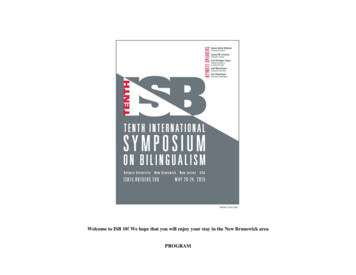
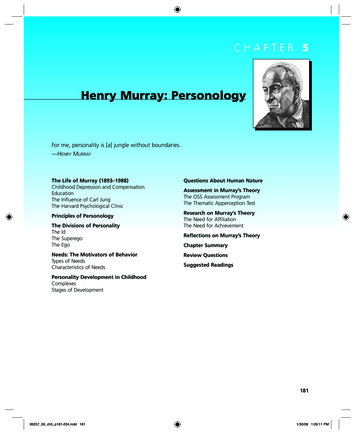

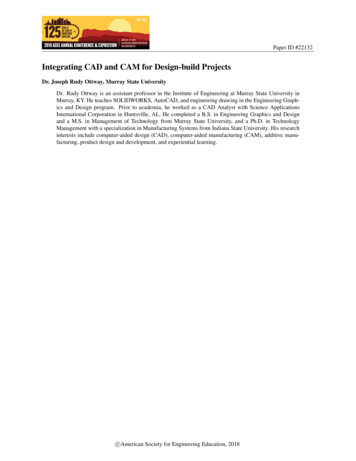
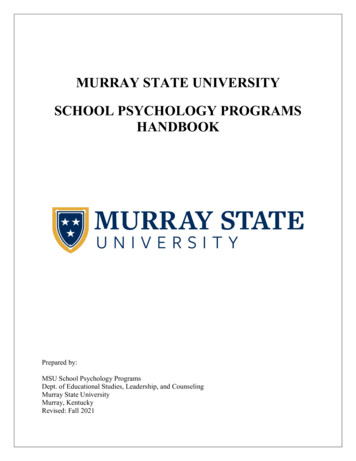


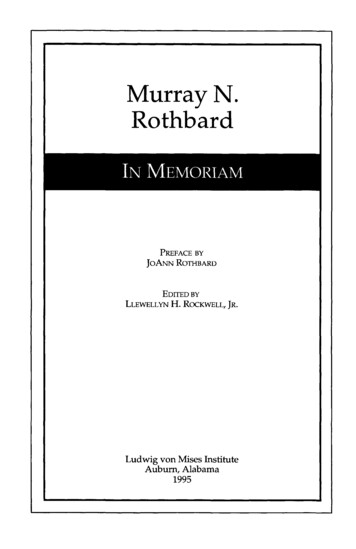

![EXHIBIT 24 [Filed Under Seal] - Washington Post](/img/32/cohen-v-trump-in-support-of-motion-for-class-certification-4.jpg)
